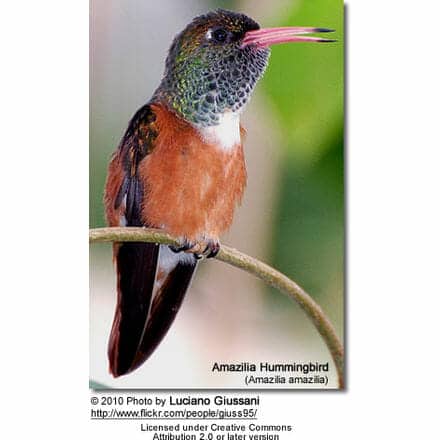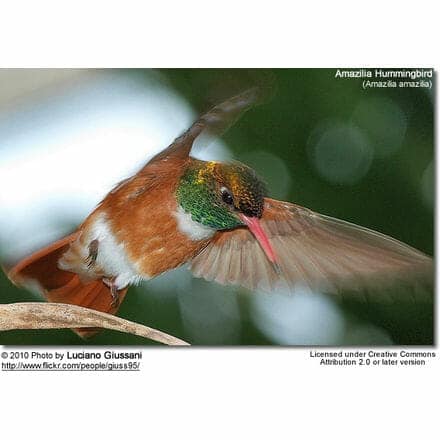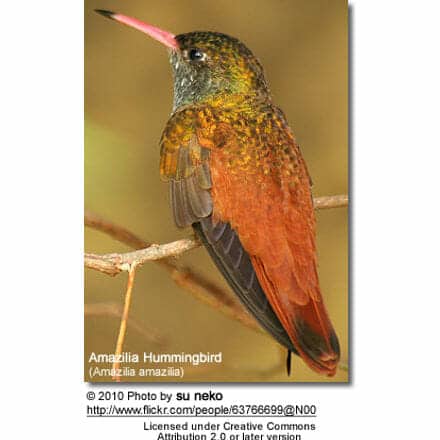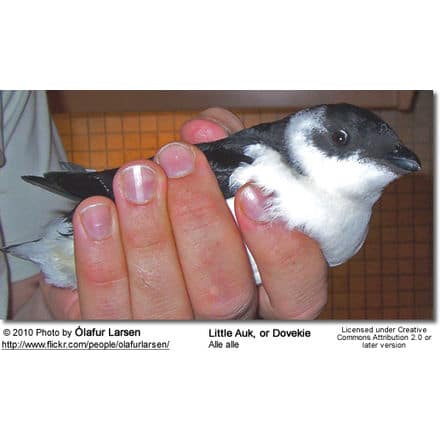Amazilia Hummingbirds
The Amazilia Hummingbirds (Amazilia amazilia) occur naturally in South America, specifically in western Peru and Ecuador. This hummingbird is generally common within its range, and can regularly be seen in urban areas, including large cities such as Lima and Guayaquil. It prefers dry, open, or semi-open habitats, but is also found in forest areas.
Article (in English and German): Breeding the Amazilia hummingbird at Weltvogelpark Walsrode / Zucht der Rostbauchamazilie im Weltvogelpark Walsrode


Subspecies and Ranges
- Amazilia amazilia amazilia (Lesson, 1826)- Nominate Race
- Occurs in western Peru
- Amazilia amazilia dumerilii (Lesson, 1832)
- Found west of the Andes from western Ecuador to northern Peru; along the eastern slope in southeastern Ecuador (upper Zamora Valley).
- Amazilia amazilia leucorrhoea (Reichenbach, 1854)
- Found in northwestern Peru
- Amazilia amazilia caeruleigularis (Carriker, 1933)
- Found in southwestern Peru (Nazca Valley).

Alternate (Global) Names
Spanish: Amazilia Costeña, Amazilia de Vientre Castaño … Italian: Colibrì di Amazili, Colibrì di Amazilia … French: Ariane de Lesson … Czech: Kolibrík amazilia, kolib?ík Amaziliin … Danish: Amaziliekolibri … German: Lesson Amazilie, Lessonamazilie, Lesson-Amazilie, Rostbauchamazilie … English: Amazilia Hummingbird, Brown-bellied Amazilia, Violet-chested Hummingbird …Finnish: Pronssitimanttikolibri … Japanese: chamuneemerarudohachidori … Dutch: Gewone Amazilia, Lesson-amazilia … Norwegian: Amaziliakolibri … Polish: szmaragdzik zielony … Russian: ???????? ??????? … Slovak: kolibrík hájový … Swedish: Amaziliasmaragd

Description
It is easily recognized by its black-tipped red bill and mainly rufous underparts.
The Loja Hummingbird (A. alticola) is sometimes considered a subspecies of the Amazilia. It can be identified by the color of its underparts, which shows less rufous.
Hummingbird Resources
- Hummingbird Information
- Hummingbird Amazing Facts
- Attracting Hummingbirds to Your Garden
- Hummingbird Species
- Feeding Hummingbirds
Nesting / Breeding
Hummingbirds are solitary in all aspects of life other than breeding, and the male’s only involvement in the reproductive process is the actual mating with the female. They neither live nor migrate in flocks, and there is no pair bond for this species.
Males court females by flying in a U-shaped pattern in front of them. He will separate from the female immediately after copulation. One male may mate with several females. In all likelihood, the female will also mate with several males. The males do not participate in choosing the nest location, building the nest, or raising the chicks.
The female Amazilia Hummingbirds responsible for building the cup-shaped nest out of plant fibers woven together and green moss on the outside for camouflage in a protected location in a shrub, bush, or tree.
She lines the nest with soft plant fibers, animal hair, and feathers down, and strengthens the structure with spider webbing and other sticky material, giving it an elastic quality to allow it to stretch to double its size as the chicks grow and need more room. The nest is typically found on a low, thin horizontal branch.
The average clutch consists of two white eggs, which she incubates alone, while the male defends his territory and the flowers he feeds on. The young are born blind, immobile, and without any down.
The female alone protects and feeds the chicks with regurgitated food (mostly partially digested insects since nectar is an insufficient source of protein for the growing chicks). The female pushes the food down the chicks’ throats with her long bill directly into their stomachs.
As is the case with other hummingbird species, the chicks are brooded only the first week or two and are left alone even on cooler nights after about 12 days – probably due to the small nest size. The chicks leave the nest when they are about 20 days old.
Amazilia Hummingbirds at the Walsrode zoo: Captive Breeding of Hummingbirds

Diet / Feeding
The Amazilia Hummingbirds primarily feed on nectar taken from a variety of brightly colored, scented small flowers of trees, herbs, shrubs, and epiphytes. They favor flowers with the highest sugar content (often red-colored and tubular-shaped) and seek out, and aggressively protect, those areas containing flowers with high-energy nectar. They use their long, extendible, straw-like tongues to retrieve the nectar while hovering with their tails cocked upward as they are licking at the nectar up to 13 times per second. Sometimes they may be seen hanging on the flower while feeding.
Many native and cultivated plants on whose flowers these birds feed heavily rely on them for pollination. The mostly tubular-shaped flowers exclude most bees and butterflies from feeding on them and, subsequently, from pollinating the plants.
They may also visit local hummingbird feeders for some sugar water, or drink out of bird baths or water fountains where they will either hover and sip water as it runs over the edge; or they will perch on the edge and drink – like all the other birds; however, they only remain still for a short moment.
They also take some small spiders and insects – important sources of protein, particularly needed during the breeding season. Insects are often caught in flight (hawking); snatched off leaves or branches, or taken from spider webs. A nesting female can capture up to 2,000 insects a day.
Males establish feeding territories, where they aggressively chase away other males as well as large insects – such as bumblebees and hawk moths – that want to feed in their territory. They use aerial flights and intimidating displays to defend their territories.





